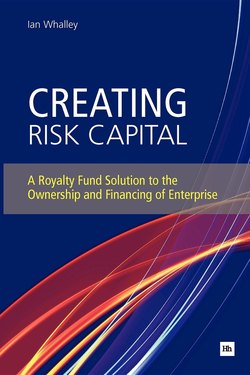Читать книгу Creating Risk Capital - Ian Whalley - Страница 29
На сайте Литреса книга снята с продажи.
Limited liability [19]
ОглавлениеThere is one form of legal structure for enterprise which dominates all others in the major countries: the limited company. It has become widely used for private, public and even non-profit enterprises since the mid-nineteenth century. However a different enterprise form, the société en commandite, or limited partnership, was used in Europe long before that, but was not introduced in Britain until the twentieth century and never became as popular.
In a limited partnership, the general partner is responsible for the partnership while capital is raised from investors, who become limited partners and take no part in the management. The general partner has unlimited liability for partnership debts, while the investors have limited liability.
The limited partnership structure has been widely adopted for venture capital funds in the USA and Britain, and in the USA in particular, for such ventures as oil and gas exploration, development drilling, real estate projects, equipment leasing, film financing, and research and development.
Limited partnerships are also used to separate ownership and control, and as such are especially popular in Europe as a means of perpetuating family control of an expanding enterprise.
The basic characteristics of the company are its separate legal personality, its permanence through perpetual succession, its delegation of management, its shared ownership with transferable shares, and the limited liability it carries for owners and managers in the majority of cases.
Early companies like the East India Company were places where lives were at risk, as well as fortunes, as ships encountered routine hazards such as bad weather, piracy and hostilities between nations. As companies developed from organisations engaged in business into distinct legal entities, laws championed in the mid-nineteenth century by a few English politicians, including William Gladstone and Robert Lowe, “the father of the modern company”, introduced limited liability. [20]
The development of the limited liability company coincided with that of the new industry of railways, which required huge amounts of capital. A railway company could now raise that capital by issuing shares to any number of investors, who would be encouraged to invest in the knowledge that their liability for the debts of the company would be limited to their shareholding.
Despite teething problems, including many failures of the first limited companies, or little Republics as Lowe called them, the various Companies Acts of the mid-nineteenth century launched a new institution which was widely copied in many other countries. The “various ‘Ltds’, ‘Incs’, ‘SAs’, ‘AGs’ and so on drew in capital from around the globe”. [21] Already in 1904, for example, “the Zionist bank in London boasted 135,000 shareholders, the largest number financing any enterprise in the world”. [22]
According to Micklethwait and Wooldridge, authors of a compelling study on the history of the company, [23] “companies have proved themselves the most efficient creators of prosperity and progress yet known to humanity”, and “Most of us work for them. They make almost everything we buy. Most of our savings are tied up in them”. [24] Companies also display an impressive ability to transform themselves. Thus, for example, the American company 3M moved from mining to abrasives and Scotch Tape and myriad other industries, while the Finnish company Nokia, a former papermaker, has become a leading producer of mobile phones.
The corporate structure has become the most important form of economic association for major business enterprise in the advanced market economies. Major companies have been responsible for immense undertakings with long timescales, high costs and considerable risks, such as the exploitation of North Sea oil and gas reserves and the development of new pharmaceutical products. So it is perhaps no surprise that Nicholas Murray Butler, President of Columbia University and one of the great sages of his era, considered the limited liability corporation to be the single greatest discovery of modern times. [25]
